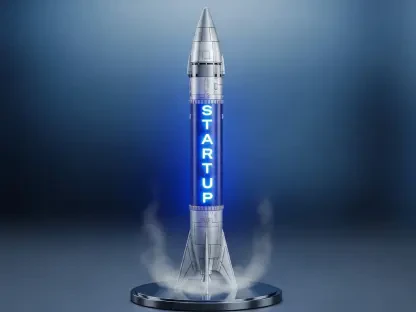In today’s fast-paced business landscape, Software as a Service (SaaS) companies must navigate various financial processes to remain competitive. A crucial component of this landscape is the order-to-cash (O2C) cycle, which encompasses the journey from receiving customer orders to collecting payments and acknowledging revenue. For SaaS businesses, where subscriptions and recurring billing introduce additional complexities, optimizing this cycle becomes paramount. The efficiency and effectiveness of the O2C process directly impact a company’s cash flow, customer satisfaction, and internal coordination. It is therefore imperative for SaaS companies to explore strategies for refining their O2C processes to secure long-term success.
Understanding the Intricacies of Order-to-Cash
The order-to-cash process involves several stages, each integral to ensuring a seamless flow from order receipt to payment collection. The cycle begins with order management, where customer orders are captured and processed, payment terms are established, and order details are validated. This stage is critical for ensuring that orders are accurately entered and tracked within the system, setting the foundation for subsequent stages. Following order management, credit management comes into play, evaluating customer creditworthiness and conducting risk assessments to mitigate potential defaults. This proactive step helps in maintaining financial stability and reducing outstanding debts.
Order fulfillment is another crucial stage in the O2C process, involving the timely and accurate delivery of products or services. For SaaS companies, this often translates into ensuring that customers gain access to the subscribed services without delay, thus maintaining high customer satisfaction and preventing churn. Customer invoicing follows, and accuracy in this step is vital. Errors in invoicing can lead to delayed payments, thus affecting both cash flow and customer satisfaction. This is where automation can play a significant role in ensuring precision in billing and invoicing, thereby reducing errors that human intervention might introduce.
Automation’s Role in Streamlining O2C
Incorporating automation into the order-to-cash process can significantly enhance efficiency and accuracy. Automation technologies can streamline operations by eliminating manual entry errors, thus accelerating the O2C cycle. From generating invoices to reconciling accounts receivable, automation minimizes the time required to complete various stages, ensuring a swift transition from order placement to cash collection. Additionally, automated systems can monitor past-due invoices and initiate timely reminders, thus enhancing the collections phase and minimizing the days sales outstanding (DSO) metric.
A key advantage of automation is the integration it provides across different business systems, such as Enterprise Resource Planning (ERP) and Customer Relationship Management (CRM) platforms. This integration fosters a seamless flow of information, ensuring that all departments operate from a single source of truth. By doing so, businesses not only improve interdepartmental communication but also increase data accuracy and visibility, leading to more informed decision-making. Such integration also supports reporting and data management processes, providing real-time insights into financial performance metrics and enabling quicker adaptations to market changes.
Comparative Insights with Other Processes
The order-to-cash process is often juxtaposed with other business processes such as Configure, Price, Quote (CPQ) and Quote-to-Cash (Q2C). While CPQ focuses on assisting sales teams in generating accurate quotes, ensuring the correct pricing for complex product configurations, the Q2C process encompasses a broader range of activities. Q2C begins with capturing customer intent and spans through order creation, invoicing, and payment collection, culminating in renewals and expansions. Order-to-cash fits into the Q2C spectrum but is more narrowly focused on the post-order activities necessary for transforming sales into actual revenue.
Understanding these distinctions is essential for SaaS companies to choose the right technologies and methodologies for their respective needs. By differentiating these processes, businesses can implement specialized tools that handle the intricacies of recurring billing and subscription management. For SaaS companies, leveraging tools that support these activities means a more efficient, scalable approach to managing customer relationships and financial operations. Such differentiation ensures that all aspects of the sales cycle are managed effectively, contributing to overall business growth and sustainability.
Key Technologies for SaaS Success
To thrive in a competitive market, SaaS companies must adopt technologies that cater to the nuanced requirements of the order-to-cash process. Software solutions offering unified platforms for managing financial operations can significantly optimize processes. Such platforms provide capabilities for managing everything from order processing to payment collections, integrating seamlessly with existing systems like ERP and CRM. These integrated solutions reduce the need for disparate systems, creating a cohesive environment that simplifies financial oversight and control.
Furthermore, advanced analytics embedded within these technologies equip businesses with the tools needed for in-depth financial performance evaluations. By accessing real-time data and generating comprehensive financial reports, SaaS companies can swiftly identify potential bottlenecks and areas requiring attention. This insight facilitates strategic planning and resource allocation, ensuring that the company remains agile in its operations. Adopting such technologies not only aids process optimization but also fortifies the company’s adaptability to fluctuating market dynamics, providing a competitive edge.
Future Considerations for O2C Optimization
Looking ahead, the significance of the order-to-cash process in SaaS business strategies is expected to grow, with continuous advancements in AI and machine learning further refining efficiency gains. Companies should consider investing in these technologies to predict customer behaviors, automate more complex financial tasks, and enhance decision-making capabilities. Evolving digital payment methods and platforms present additional avenues for streamlining the payment collections phase, offering faster, more secure transaction processes.
Moreover, as SaaS businesses expand, the importance of maintaining regulatory compliance in terms of revenue recognition and financial reporting will intensify. Thus, incorporating robust compliance features within O2C tools becomes a non-negotiable aspect of process optimization. By proactively adapting to technological advancements and regulatory changes, SaaS companies can sustain growth while ensuring service excellence. Analogously, investing in continuous training for teams involved in O2C processes keeps workforce skills aligned with technological developments, aiding seamless transitions and operational improvements.
Charting the Path Forward
In the rapidly evolving business environment today, Software as a Service (SaaS) companies confront complex financial processes to maintain their competitive edge. At the heart of this complexity lies the order-to-cash (O2C) cycle—a process that spans from the moment a customer places an order to the point where payment is secured and revenue is officially recorded. This procedure becomes even more intricate for SaaS businesses due to recurring billing and subscription models, which can complicate the path to realizing revenue. Therefore, maximizing efficiency and effectiveness in the O2C cycle is critical. A streamlined O2C process influences a company’s cash flow, ensuring it has adequate liquidity to seize new opportunities or manage unforeseen challenges. Moreover, it enhances customer satisfaction by minimizing delays and maximizing transparency in the billing and collection phases. The process also improves internal coordination, as departments need to communicate seamlessly to avoid bottlenecks. Therefore, SaaS companies must diligently explore strategies to refine and optimize their O2C cycles, paving the way for sustained growth and long-term success in the competitive market. Such efforts not only bolster financial health but also drive customer loyalty and operational excellence.









